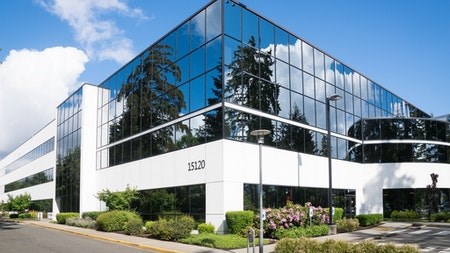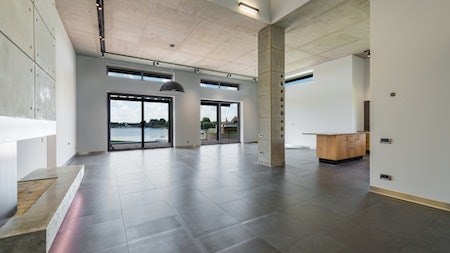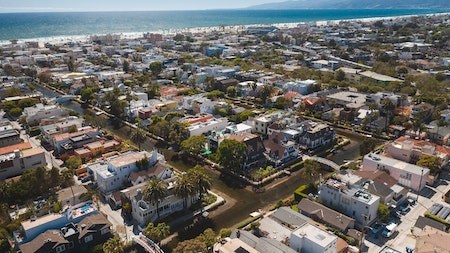I was in Sandton last week for a mask-to-mask interview. It was a surreal experience as we sat outside a coffee shop in what would, just over a year ago, have been a rather busy precinct. Surrounded by high rise buildings, with the social area set in the middle, it felt as though we were among few survivors of an apocalypse, and for the owners of some of these prestigious buildings the impacts are similar.
Diminishing and work-from-home workforces have left buildings eerily silent; yet these are premises that boast state-of-the-art design, in work-play environments that have added viability from an investment perspective.
Although not a new concept, now more than ever before in the wake of Covid-19 impacts, property investors and landlords are beginning to seek the transformation of commercial buildings into prime urban real estate, if for no other reason than to boost value and maximise the revenue that can be delivered.
It’s an attractive prospect, and certainly was already trending in major CBDs pre-Covid-19, as explained by Mantsikoe Moiloa, Divisional Director at Cushman & Wakefield | BROLL. “It was always seen as an opportunistic way for the investment community to capitalise on the surplus of older office buildings that were characterised by stubborn vacancies. The trend was bolstered further by economic development efforts from mayors, including Johannesburg where the private sector was encouraged to co-invest with the City and expend the capital required to convert neglected assets and landscapes into affordable and desirable living spaces, close to places of employment and education.”
Sean Berowsky, Divisional Director of Broking SA, highlights some examples. “This type of conversion worked successfully in Cape Town for example where the Onyx building, owned by Nedbank in the CBD, was sold to Signatura that redeveloped into a mixed use residential and apart-hotel property with ancillary retail. Another, 16 Bree Street in Cape Town was redeveloped by FWJK into a modern residential tower with ground and mezzanine retail units.”
There are a number of reasons why conversions to residential are currently a popular consideration for existing commercial building owners. Firstly there is the SA housing shortage, which in 2019 showed a shortfall of 2.1-million homes, to house some 12.5-million people, so there is demand. Secondly is the fight against urban sprawl, where we lose treasured green spaces. With infrastructure already in place in the high rise and unoccupied commercial buildings, the potential to solve these challenges is an attractive prospect.
“The natural solution to solving the need for decent and affordable housing is to use commercial spaces that have seen a spike in vacancies,” says Moiloa. “However, the quality of residential spaces is a critical consideration, as is the location, and price.”
None of this is straightforward. Rezoning is just one of the problems and is dependent on a large number of legal, and somewhat tricky archaic by-laws. Even assuming there is approval, only certain buildings lend themselves to being redeveloped. “Buildings that have very large floor plates, or buildings that don’t have enough natural light are not suitable for residential spaces,” says Berowsky.
“Conversions are not a walk in the park either,” Moiloa points out. “The buildings that respond well require significant expenditure or funding programmes such as those offered by the Social Housing Regulatory Authority (SHRA), which has been vital in enabling the partnered delivery of decent and affordable rental stock to tenants in the R1 500-R15 000 a month income band.
“Developers that make use of SHRA in their business models are not the only players in the conversion market however. Established convert-to-rent outfits like City Property, Octodec, and Diversity Urban Fund have had success with traditional funding structures but others have collapsed. The overriding message remains that you have to have a special kind of willpower and belief in the potential of a CBD to successfully participate in making them decent and inclusive spaces,” Moiloa says.
“There is a certain beauty though in being able to reclaim vacant stocks and transforming them into precious commodities that are relevant for today’s needs and ownership demands, whether that be that for student accommodation, subsidised housing, rentals, or rent-to-own stock.”
The crux is that commercial building owners and landlords are being forced to consider all things to stay afloat and remain relevant, so are looking at strategic pivots in their investment strategies to diversify. This obviously means conversion could be a game-changer. For those with the skill set, time and financial ability, the conversions are inhouse, but the majority, confirms Berowsky, are choosing to sell or undertake joint ventures with specialist residential developers.
The Broll Property Group for example, has the capability to connect owners of commercial spaces with investors who specialise in residential conversion opportunities. Moiloa says the best result is when the conversion into residential feels like it was the always the intention, as was the case with The Heriot City Centre Apartments in Cape Town … “a real triumph’ she says.
“For owners and landlords the mantra right now is to rationalise. However being encumbered by long leases in many situations, the amount of sub-lease space available is effectively competing with the rising vacancies that property investors are presenting to the market. On the occupier-user properties, there is the motivation to sell under-utilised stock, which is also on the increase considering lackluster property values and the total cost of ownership incurred by not disposing of the stock.
“Conversions can be a lucrative and sustainable offering, and the often-vilified private sector can and is offering a response to fulfilling its social contract,” says Moiloa.
This really is an opportunity to rethink urban planning. Instead of sprawling out, our currently somber skyrise cities and towns can become centres of activity again: work-play-live environments that provide balance, accessibility, with green and open spaces, and a quality of living that is more equal for all.





